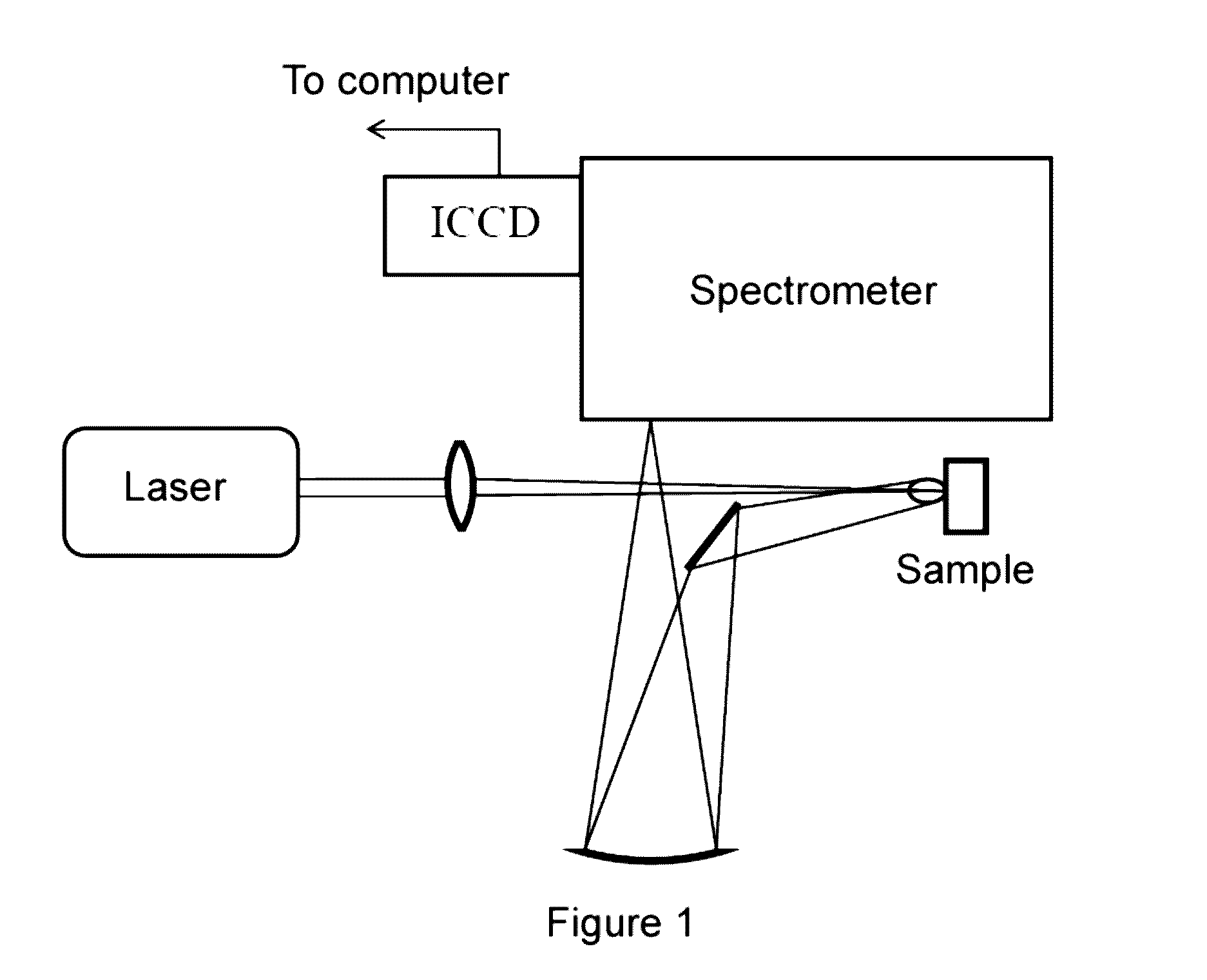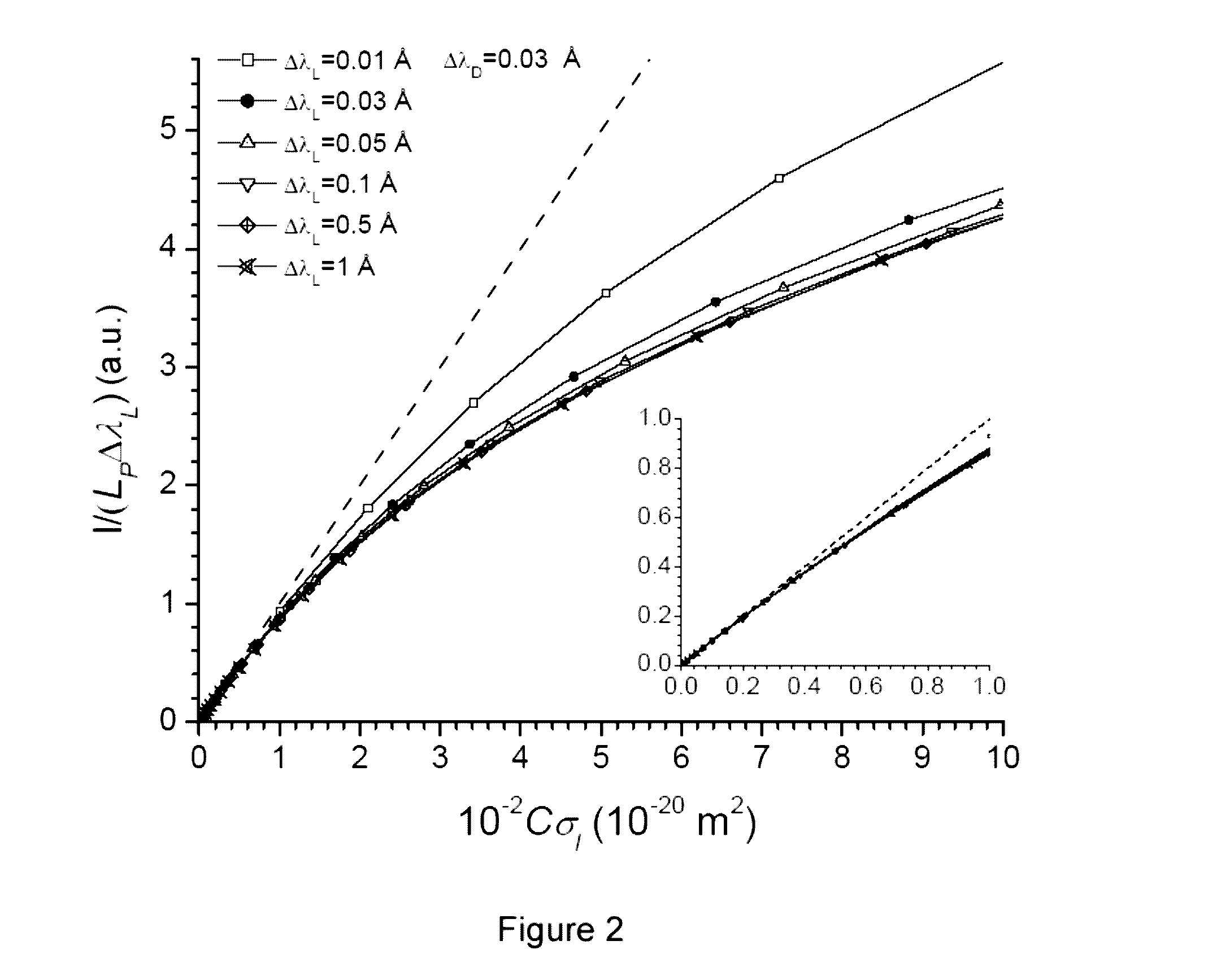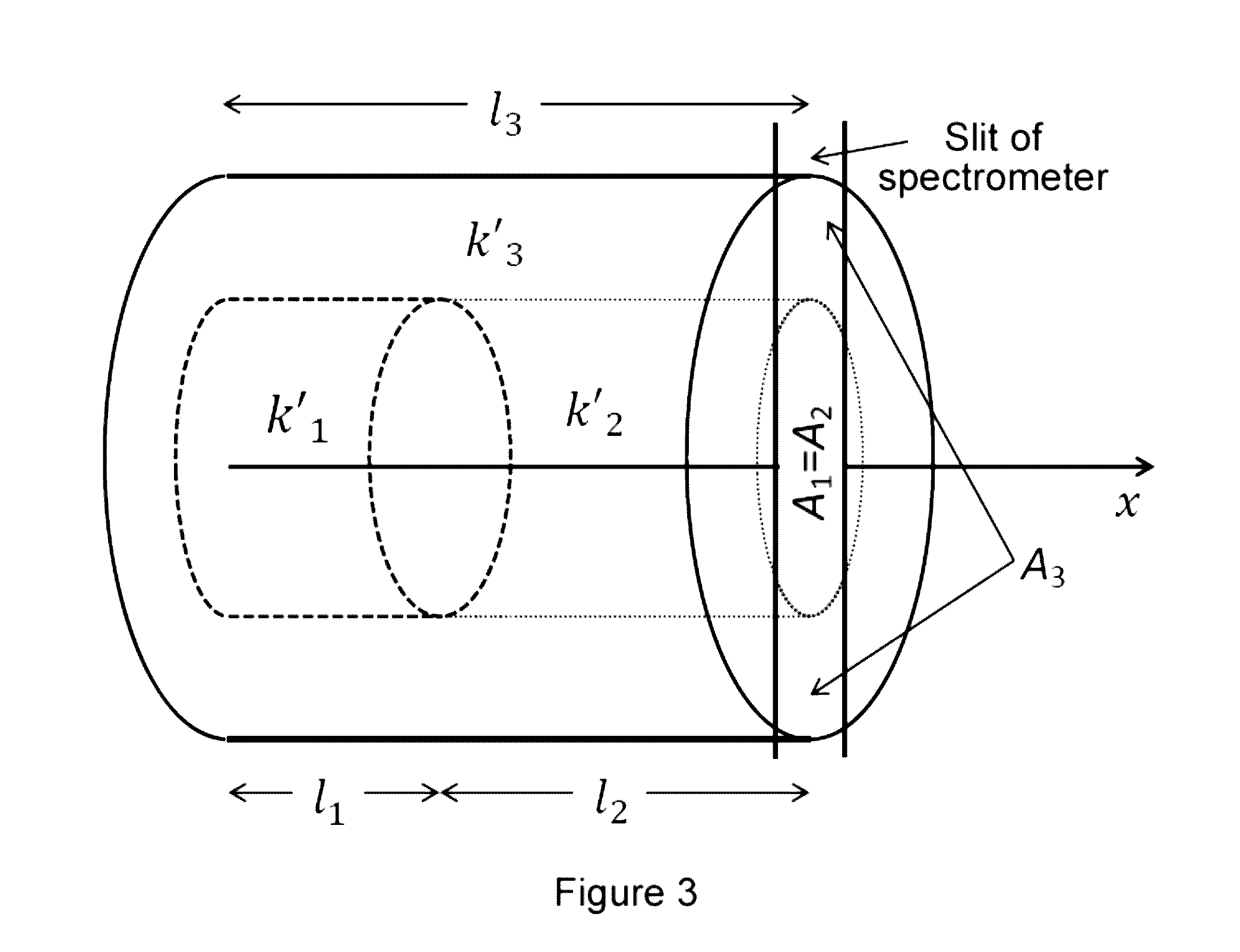Quantitative analysis method for analyzing the elemental composition of materials by means of libs technique
a quantitative analysis and elemental composition technology, applied in the field of analytical of the composition of materials, can solve the problems of high degree of self-absorption in the plasma, difficult to describe, and require a prior calibration
- Summary
- Abstract
- Description
- Claims
- Application Information
AI Technical Summary
Benefits of technology
Problems solved by technology
Method used
Image
Examples
Embodiment Construction
a) Basic Principles of the LIBS Technique
[0018]FIG. 1 shows a schematic drawing of the LIBS system used for performing the elemental analysis method proposed in this invention. The LIBS technique uses a pulsed laser focused on a material to generate a plasma. The radiation emitted by a part of the plasma is detected by the system. The LIBS system allows obtaining a radiation spectrum formed by a continuum and the emission lines characteristic of the elements forming the material. The concentrations of the elements are determined by means of analyzing the spectrum.
[0019]Various useful relationships are deduced from plasma theory in local thermodynamic equilibrium (LTE). The local temperature T describes in each position the population of the energy levels of the atoms of the plasma by means of the Boltzmann equation. From the population, the emission coefficient for a spectral line emitted by an atom of an element α in an ionization state z is deduced as a function of the atomic data...
PUM
| Property | Measurement | Unit |
|---|---|---|
| concentrations | aaaaa | aaaaa |
| electron density | aaaaa | aaaaa |
| total density | aaaaa | aaaaa |
Abstract
Description
Claims
Application Information
 Login to View More
Login to View More - R&D
- Intellectual Property
- Life Sciences
- Materials
- Tech Scout
- Unparalleled Data Quality
- Higher Quality Content
- 60% Fewer Hallucinations
Browse by: Latest US Patents, China's latest patents, Technical Efficacy Thesaurus, Application Domain, Technology Topic, Popular Technical Reports.
© 2025 PatSnap. All rights reserved.Legal|Privacy policy|Modern Slavery Act Transparency Statement|Sitemap|About US| Contact US: help@patsnap.com



